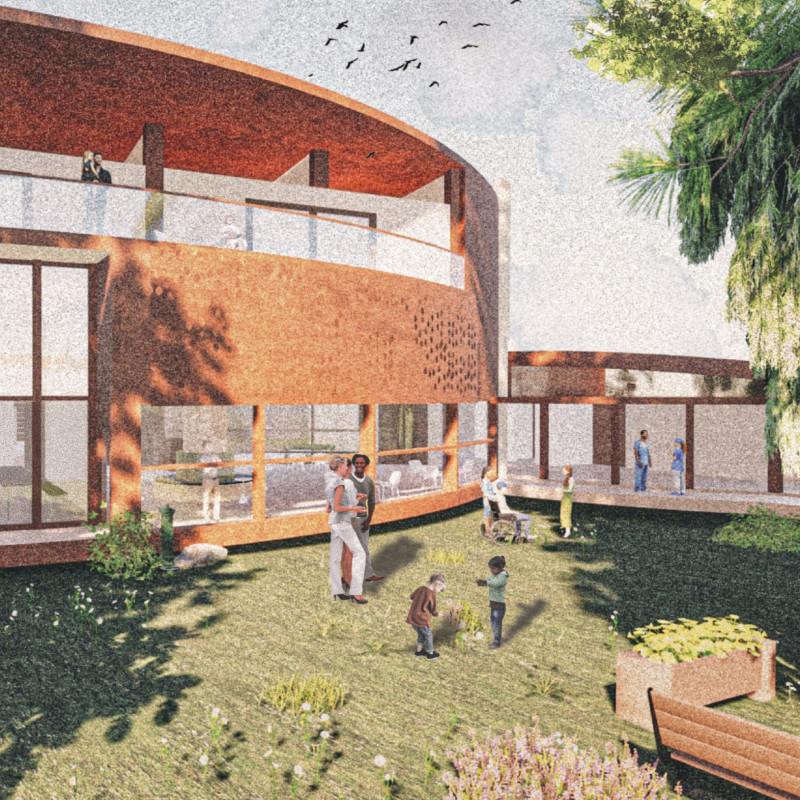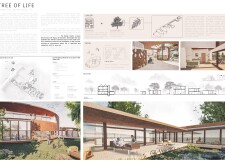5 key facts about this project
## Architectural Report on the 'Tree of Life' Project
### Overview
Located within a tranquil setting, the 'Tree of Life' serves as a hospice for terminally ill patients, emphasizing a therapeutic environment that harmonizes with nature. The design philosophy is inspired by the cedar tree, symbolizing growth and connection, and aims to create a nurturing space for both patients and their families. This report outlines the core design concepts, material choices, and structural layout that contribute to its vision of person-centered care.
### Spatial Organization
The layout of the facility reflects the organic structure of a cedar tree, where the central building, representing the trunk, houses essential services such as reception and communal areas. Flanking this core, specialized patient rooms function as branches, with each element thoughtfully designed to enhance the interconnectedness among spaces while providing necessary privacy. An isometric plan illustrates a functional arrangement that supports ease of circulation and access to key areas, including dedicated rooms for various patient needs, all oriented towards maximizing views of the surrounding landscape.
### Material Selection and Sustainability
Sustainability is a primary consideration in material selection, with Corten steel chosen for its durability and aesthetic qualities that evoke the appearance of aged cedar. The extensive use of glass ensures optimal natural light and visual connectivity with outdoor gardens, enhancing the therapeutic atmosphere. Wood is incorporated throughout for structural integrity and warmth, creating a familiar and comforting environment. Additionally, natural stone and vegetation in the landscaping reinforce the project's commitment to integrating nature into the healing process, offering an environment conducive to reflection and solace.
Through the deliberate arrangement of spaces and careful selection of materials, the 'Tree of Life' fosters a supportive atmosphere for patients and families at a sensitive time, encapsulating the essence of compassionate design in healthcare architecture.






















































